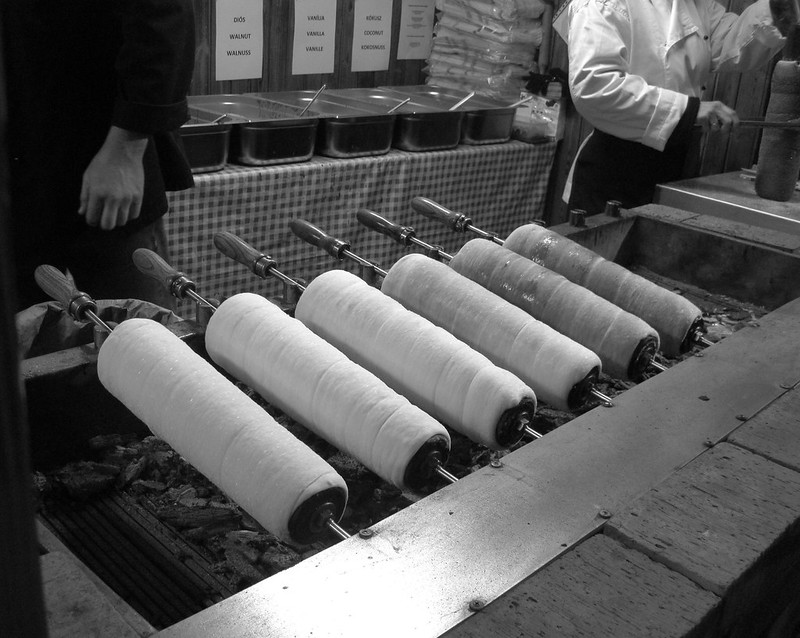Since it’s been ages since I’ve done one of these, here are two pictures of Budapest from our Christmas trip.
Tag: food
Cool Links for June 17th
So daylilies are invasive and beautiful and at least around here, incredibly prolific. Did you know they’re also edible? You can eat the shoots, tubers, buds, and flowers. Evidently dried flowers are used in some Chinese recipes as “golden needles”, and they can be used to thicken soups and gravies. We have an abundance of them here at the Manor, because as it turns out they are perfectly willing to spread from seed if you don’t deadhead the buggers.
Hidden Rivers: a film series about the vibrant waters of Southern Appalachia
The video below gives you a preview of the film they’re making about the rivers of the southeastern USA. Beautiful fish there, like you wouldn’t believe live in our waters. The link goes to an Indigogo Campaign, raising money for the next few days! Kick in a few if you can. It’s lovely.
The rivers and streams of the Southern Appalachia are among the most diverse ecosystems in North America, and host globally unique groups of fish, amphibians, crayfish, mussels, and more… most of them virtually unseen and unknown to most Americans. As aquatic documentarians, we see in these waters an opportunity to expose the intricate beauty of what river ecosystems are, and what is ultimately worth protecting in a region that has seen some of America’s worst environmental disasters. Our goal is to create a collection of media that can build more public awareness for the value of these waters, and a greater sense of pride and protection for their beauty.
12 Old Words that Survived by Getting Fossilized in Idioms
English has changed a lot in the last several hundred years, and there are many words once used that we would no longer recognize today. For whatever reason, we started pronouncing them differently, or stopped using them entirely, and they became obsolete. There are some old words, however, that are nearly obsolete, but we still recognize because they were lucky enough to get stuck in set phrases that have lasted across the centuries. Here are 12 lucky words that survived by getting fossilized in idioms.
Cool Links for June 4th
I’m leading a Knowledge Commons DC class on Saturday, Hidden Rivers and Lost Neighborhoods, a Tour by Bicycle. We’ll be talking about the hydrologic history of D.C., tracing old streams, looking at the city’s water supply infrastructure, and poking around old neighborhoods like the Irish-American Swampoodle.
Old Church Converted into a Modern Bookstore
Built in 1294, the cathedral features large open spaces boasting three-story bookshelves. Being that the church contains 1,200 square meters of shopping space with only 750 square meters of floor space, the architects decided to design vertically. They incorporate the modern scheme of the shop without obstructing the religious motifs or structure of the ancient venue. Within the space, there is also a cafe. As a nod to the bookstore’s past-life, there is a long table shaped like a cross in the eating area, which is conveniently located where the choir formerly situated themselves.
A celebrity mastectomy, two hundred years before Angelina Jolie
In 1811, Burney had a mastectomy in France. This being 1811, she was conscious throughout the procedure, and described it in a letter to her sister nine months later. It took her three months, by her own admission, to write, and she couldn’t bring herself to reread it when it was finished.
I’ll Have My Aronia Cocktail Now, Please. I can’t wait until my chokeberries have enough fruit on them to try this!
Then she brought me over to the booth next to hers, where somebody had stashed away a bottle of aronia juice, and I got a taste. Wow! Imagine something between cranberries and wild, tart blueberries, and you’re close enough. It was rich, tart, and delicious.
Fanged, carnivorous plant pals up with swimming ants
It ain’t exactly a match made in heaven, but it’s a friendship forged in the steamy peat swamp forests of Borneo.
That’s where the fanged pitcher plant, or Nepenthes bicalcarata, teams up with a plucky, fluid-diving ant that makes its home nowhere else in the world but on the stalks and leaves of the carnivorous plant. The ant, Camponotus schmitzi, even swims around in the plant’s lethal pools of digestive fluid!

